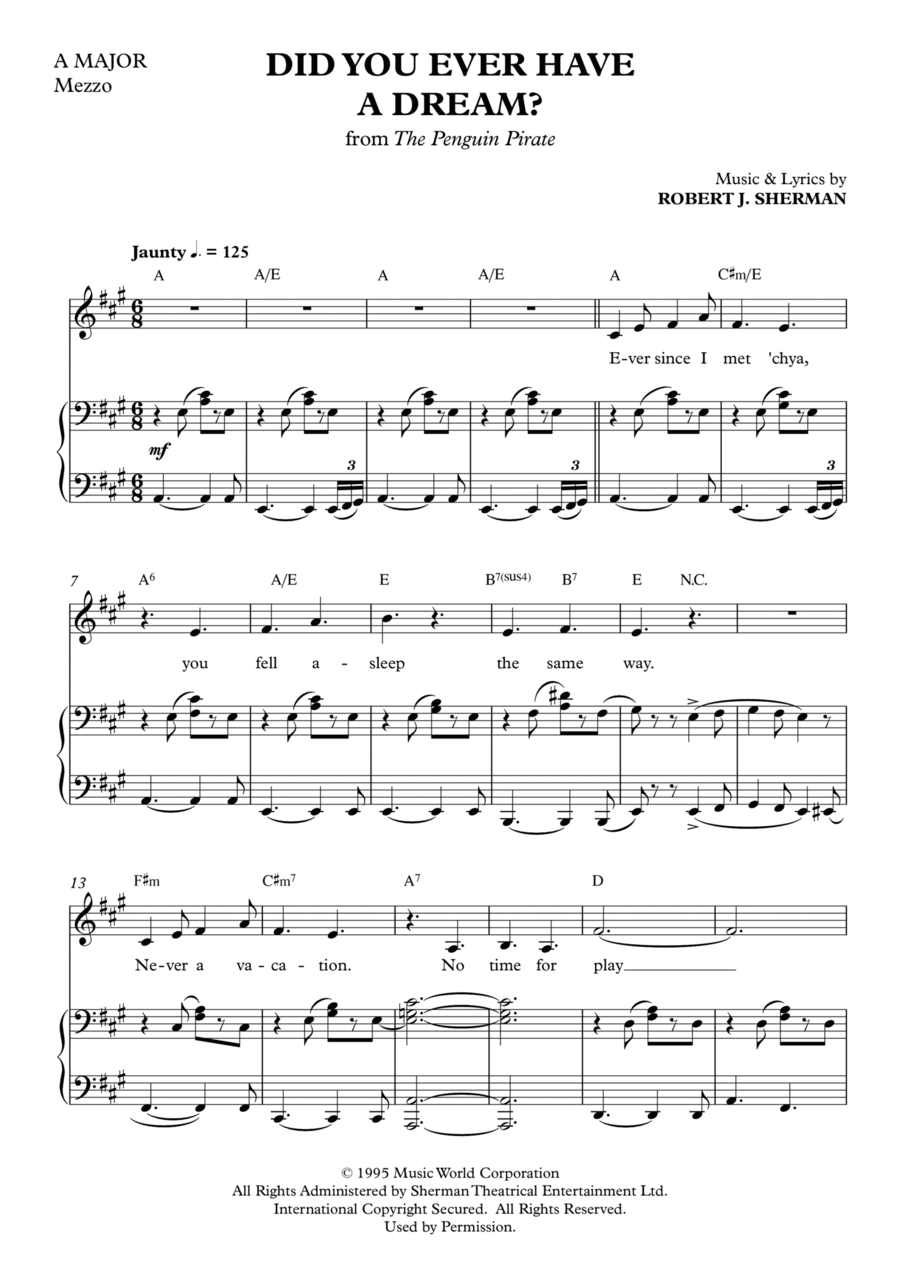Piano,Vocal,Voice - Digital Download SKU: A0.529579 Composed by Robert J. Sherman. Arranged by Original Piano/Vocal Arrangement by Robert J. Sherman. Broadway,Contest,Festival,Instructional,Musical/Show. Score. 11 pages. Sherman Theatrical Entertainment Ltd. #117867. Published by Sherman Theatrical Entertainment Ltd. (A0.529579). Did You Ever Have a Dream is from the musical The Penguin Pirate. Arriving home very late for dinner, âNicolaiâ (aka âNickâ) is relieved to have escaped punishment, finding his father, âDomi Nostroâ fast asleep. Nick contemplates the emotional distance that has developed between the two of them as of late. Domi wants his son to focus on his studies but all Nick yearns for is a life of adventure, sailing the high seas. As the song progresses, Nick resolves to follow his dream, no matter the consequences. When printing, please scale to fit for standard US Letter or A4 size.
